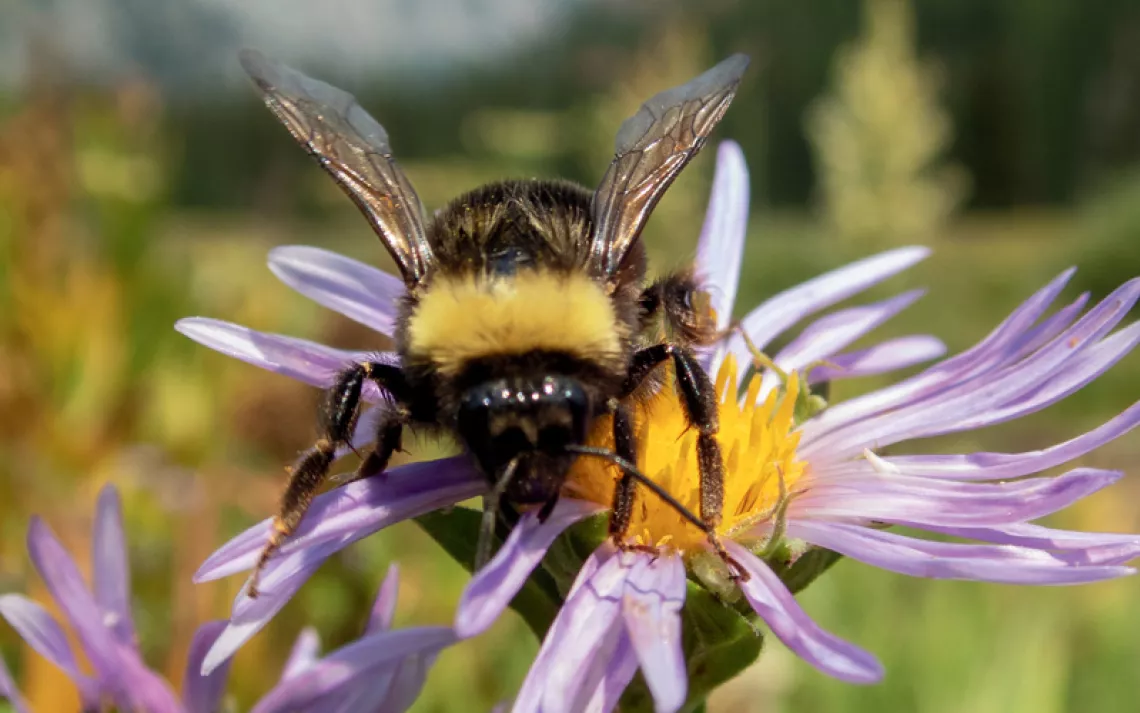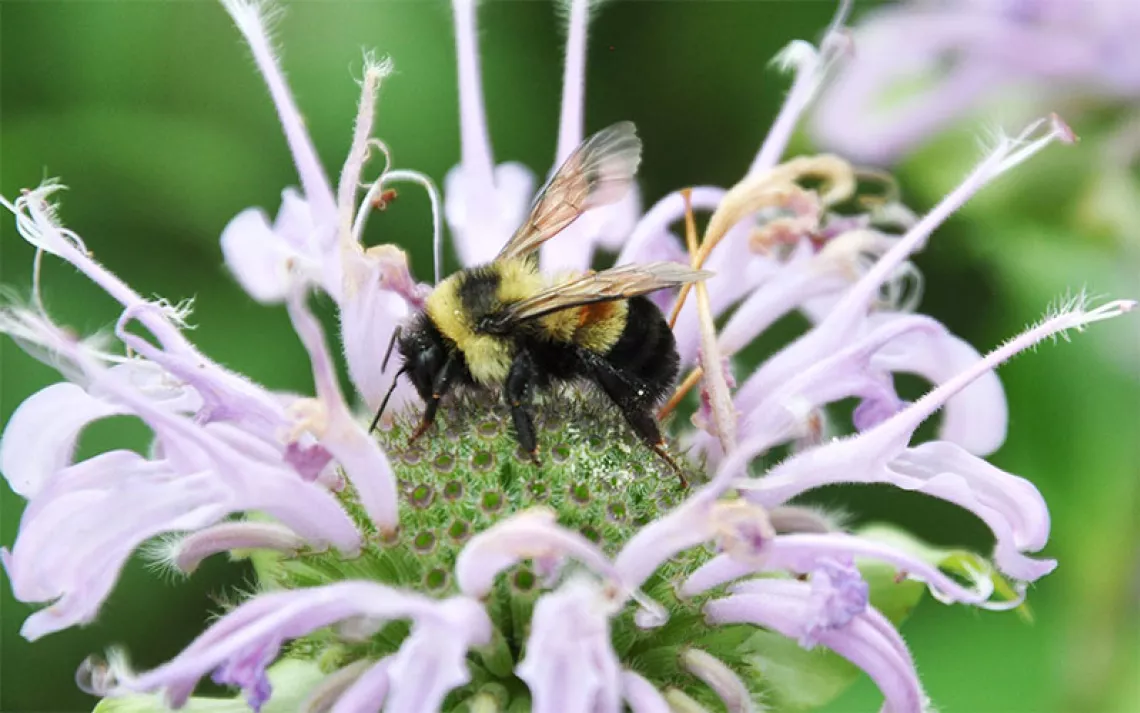How Honey Bees Can Alleviate World Hunger
Humans will miss more than the honey if bee die-offs continue

Photo courtesy of iStock/TanerYILDRIM.
Bees have a lot going against them, most notably colony-collapse disorder, which many researchers now believe is the result of widespread use of neonicotinoid pesticides. The great bee die-off caused honey production in the U.S. to decline by one-third between 2000 and 2011. But what would a life without bees actually look like?
Wild and managed pollinators like honey bees are essential to the production of 75 percent of the 115 major global crops. Take a moment and consider your life without another:
No juicy peaches in the summer time. No apricot marmalade on toast. No pumpkin pie at Thanksgiving. These are the fruits that are especially reliant on pollination. Eliminate the bees, and crop yields dwindle. To make matters worse, these scrumptious plants are the primary source of vitamin A, iron and folate for billions of people around the world, according to a new study by the Royal Society. Declines in pollinator populations could mean more than just shrunken produce departments—it’s an issue of global malnutrition.
Areas already suffering from poor nutrition also happen to be areas dependent on bees and wild insects to pollinate their main food crops—talk about bad luck. Typically, it’s poor, tropical areas that are hit hardest. Bee population’s decline, fruit production drops, farmers are malnourished and less food is produced. “It’s a vicious cycle,” said Megan Mueller, the nutrition consultant who worked on the study. “It’s happening in areas that are already poverty stricken.”
Vitamin A deficiency, which can lead to blindness, is 30 percent more common in pollinator-dependent areas, such as Southeast Asia. Iron deficiency, particularly among pregnant women, is 15 percent more common in these areas and can lead to still-births and birth defects.
“A lot of people say, ‘Why can’t you just take a vitamin?’” said Emily Dobek, analyst for the study. Fresh fruits, such as mangoes, deliver not only vitamins, but also fiber and other nutrients. And vulnerable communities simply don’t have access to supplements—they eat what they grow.
“These are the people who have the least amount of flexibility and purchasing power,” said Becky Chaplin-Kramer, lead researcher of the study. They can’t just go to the store. Communities could plant more pollinator-independent crops like carrots, corn and potatoes, but in most places this isn’t as simple as it seems. “It has to do with culture, and people not wanting to give up their pumpkins,” said Chaplin-Kramer.
Communities that rely on native and traditional crops for their cuisine are reluctant to switch what they grow.
“We’re not going to feed the world on rice and corn alone,” Dobek said.
The problem is sticky with cultural complexity and regional economics. But the answer is tiny: bees. Beekeeping directly helps stabilize crop production. Managed colonies also strengthen wild pollinator populations by providing competition.
Chaplin-Kramer and Dobeck think more policy makers should regard bee conservation as an issue of environmental justice. Saving bees, whether by reducing pesticide use or donning a veil and starting a hive, unites conservation and public health strategies; and the benefits could be global.
Follow Sierra on Facebook, Twitter, Pinterest, Instagram, and YouTube.
 The Magazine of The Sierra Club
The Magazine of The Sierra Club



